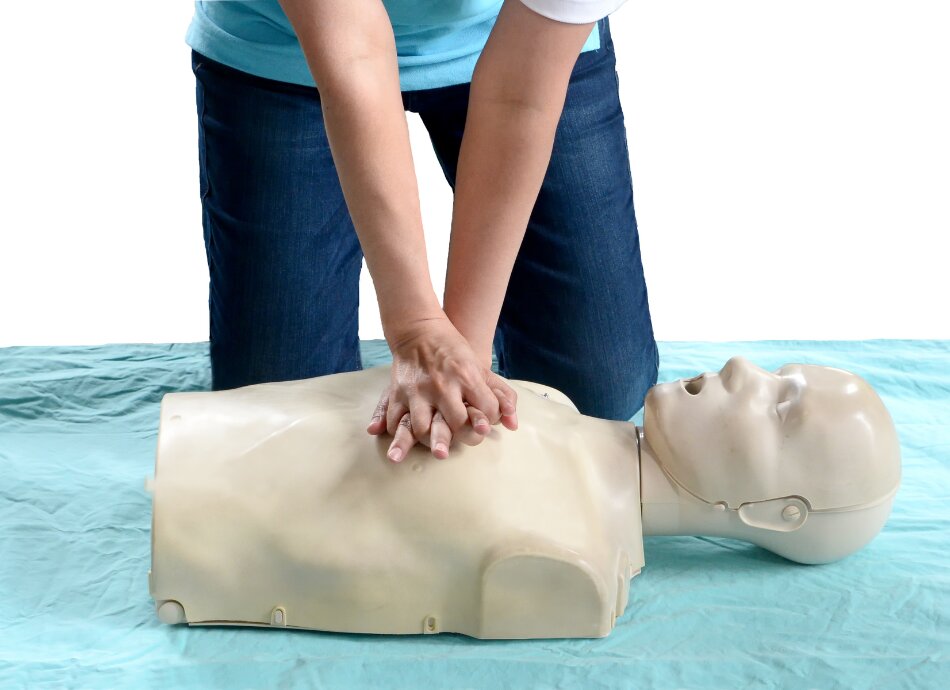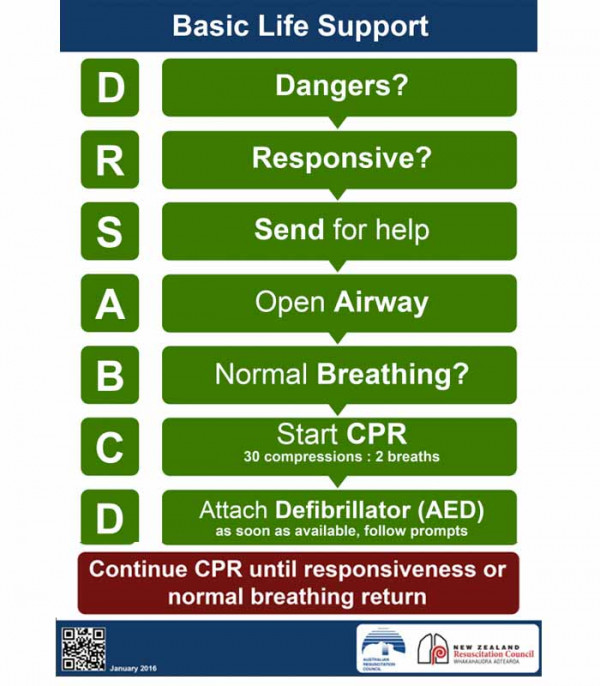1. Assess any dangers
Only approach the collapsed person if you think it’s safe to do so. Check for any immediate dangers such as traffic, or electrical hazards like downed power lines.
2. Check whether the person is responsive
If it’s safe to proceed, check to see if they’re responsive by giving a simple command or question such as “Can you hear me?”, “What’s your name?” or “Can you squeeze my hand?”, then grasp and squeeze their shoulders firmly. Moving or making a noise counts as a response.
Someone who’s taken an excessive amount of drugs or alcohol may react aggressively or unexpectedly. If you’re unsure of your safety, avoid being too close while you check to see if they're breathing.
If they don’t respond to your voice or touch, then they are unconscious and in danger of dying because of their airway becoming blocked.
3. Send for help
Call an ambulance by phoning 111 or ask someone else to call. It’s important to call 111 as soon as possible so that medical help is on its way. You will be keeping the person alive with CPR, but they need additional care to start their heart.
4. Open and clear their airway
When a person is unconscious their muscles relax, including their tongue. This is dangerous because the tongue can flop downwards against the back of the airway and block it, meaning they can’t breathe.
- Leave the unconscious person in the position you found them in to open and clear their airway.
- Tilt their head back and lift the chin.
- If you see anything in their mouth, use 2 fingers to sweep it out.
5. Check to see if they’re breathing normally
When the airway is open and clear, check for normal breathing.
- Look and feel for movement of the lower chest and upper abdomen.
- Listen and feel for air coming from their mouth or nose.
- Ignore occasional gasps of air which are not enough to maintain life.
If the person is breathing, move them and support them on their side with their head tilted back and monitor their breathing.







